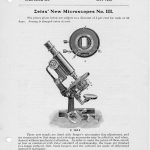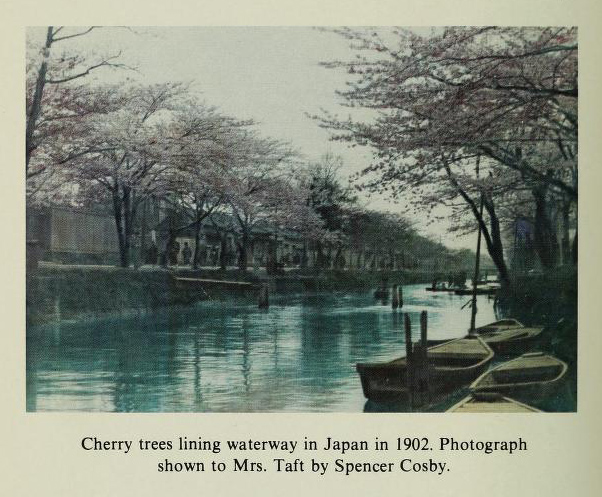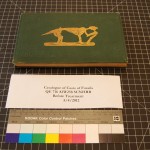 A treatment we commonly perform in the Conservation Lab is re-backing. A weak point in many case bound books is the gutter. When it fails the spine typically deteriorates and falls off the back of the book. A re-backing replaces the original spine and enables the book to be used again without sustaining further damage.
A treatment we commonly perform in the Conservation Lab is re-backing. A weak point in many case bound books is the gutter. When it fails the spine typically deteriorates and falls off the back of the book. A re-backing replaces the original spine and enables the book to be used again without sustaining further damage.
Category: Natural and Physical Sciences
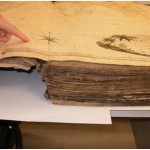 This post was written by Alyssa Penick, Intern at The Dibner Library of the History of Science and Technology.
This post was written by Alyssa Penick, Intern at The Dibner Library of the History of Science and Technology.
The Dibner Library for the History of Science and Technology recently acquired a nineteenth-century navigation atlas, The Marine Atlas, or a Seaman’s Complete Pilot for all the Principal Places in the Known World, which was published in London in 1826 by John William Norie. Currently under restoration, this large folio contains forty copperplate engravings of marine charts and depicts every ocean, sea, and coastline then known. The Dibner’s copy of The Marine Atlas is the seventh edition of the atlas and was bound in New York by Henry Spear in 1856. No other copies of Norie’s Marine Atlas are held by public collections, making this addition to the library particularly exciting.
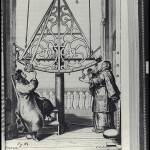 On June 5 and 6th, much of the world will be able to catch a glimpse of the planet Venus traversing across the face of the Sun. The “Transit of Venus” occurs when the planet passes between the Earth and the Sun, a rare occasion that has happened only seven times since the year 1600. Many folks in the modern era will have a chance to witness this remarkable occurrence twice in their lifetimes, as the last Transit occurred in 2004.
On June 5 and 6th, much of the world will be able to catch a glimpse of the planet Venus traversing across the face of the Sun. The “Transit of Venus” occurs when the planet passes between the Earth and the Sun, a rare occasion that has happened only seven times since the year 1600. Many folks in the modern era will have a chance to witness this remarkable occurrence twice in their lifetimes, as the last Transit occurred in 2004.
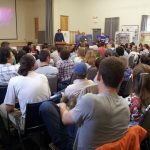
One of the truly wonderful “perks” of working at the Smithsonian Institution is being able to participate in presentations of current research. Recently I was lucky enough to attend a daylong Science Convivium at the Front Royal, Virginia headquarters of the National Zoological Park’s science arm, the Smithsonian Conservation Biology Institute (SCBI). What’s a convivium, you ask? Briefly, according to Webster’s Third New International Dictionary a convivium is a convivial gathering. Hmmm, alright. And if you’re being convivial you’re “relating to, or occupied with feasting, drinking, and good company”. Well, there was definitely good company, a nice lunch and a wine and cheese social hour in the afternoon!

This post was written by Alice Doolittle, a 2011 summer intern on the Botany-Horticulture Library. Interested in working with us this summer? Now is the time to apply! Visit our internship webpage. Applications close April 30th.
For a biologist who is also an aspiring librarian, what could be better than to spend the summer in the stacks within the National Museum of Natural History? During the summer of 2011, I spent several weeks at the Botany – Horticulture Library as a Professional Development Intern for Smithsonian Institution Libraries.
The other day, seeing this article in the Washington Post reminded me of my days at the National Arboretum (USNA) when the Arboretum cherry trees as well as the tidal more »

